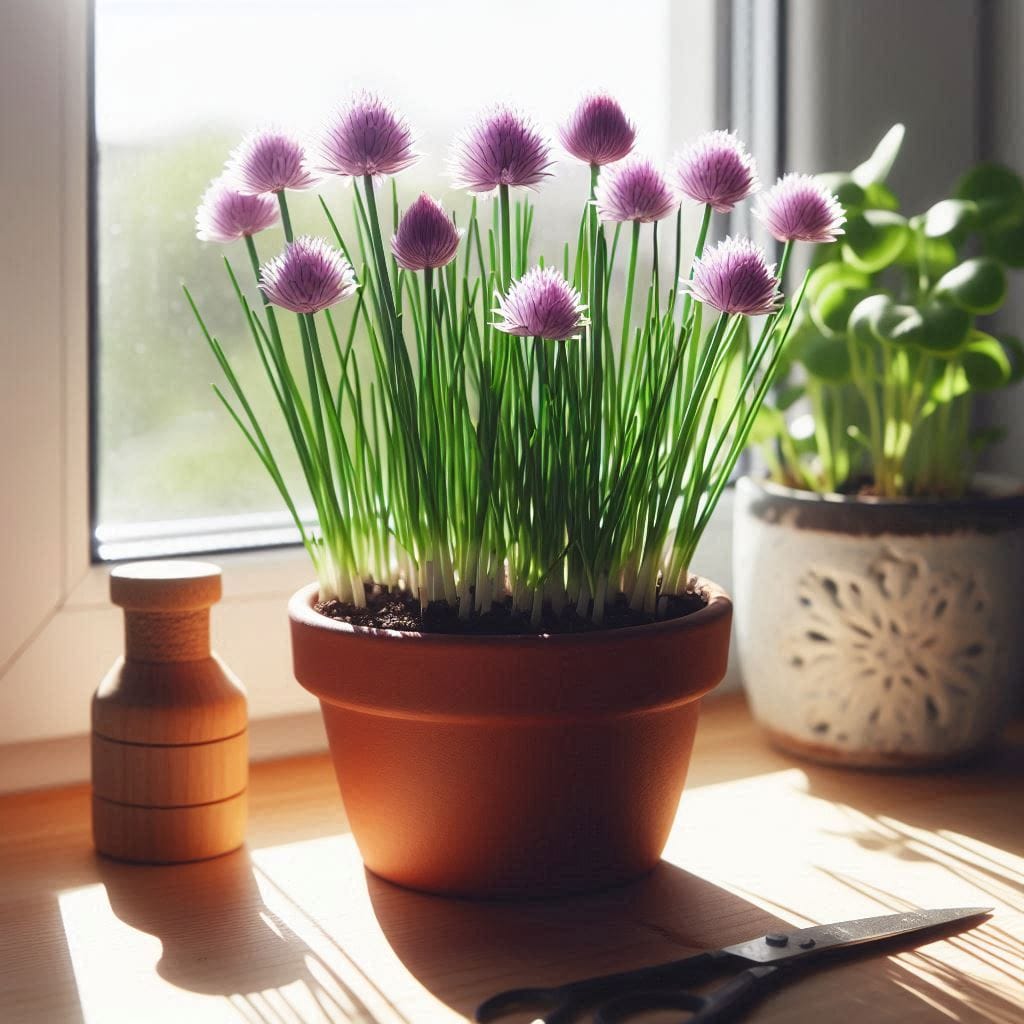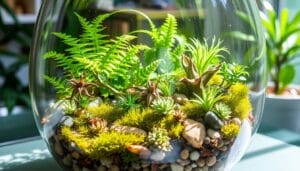Table of Contents
1. Basil

Basil is a favorite herb, especially during summer. Known for its unique flavor and aroma, it is widely used in many dishes around the world, particularly in Italian cuisine. Basil is a delicate and fragrant herb that can be added fresh to enhance any dish.
Uses
- Pair basil with strawberries for a refreshing infused water.
- Sprinkle basil on pizza or pasta for extra flavor.
- Add to salads to bring out a summer taste.
- Combine with tomatoes, olive oil, and mozzarella for a classic caprese salad.
Growing Tips
Basil is easy to grow if you give it plenty of sunlight. Regularly picking the leaves encourages the plant to keep growing throughout the summer. Some gardeners believe that planting basil next to tomatoes can help repel pests and improve the tomatoes’ flavor.
2. Thyme

Thyme is a low-growing, hardy herb that is part of the mint family. It is often used in Mediterranean, Italian, and French cuisines. Thyme pairs wonderfully with lamb, poultry, and tomatoes. You can also add it to soups and stews for extra flavor.
Thyme needs at least 6-8 hours of sunlight daily and is drought-tolerant, making it perfect for summer gardens. It can be dried, frozen, or used to make herb oil. Popular varieties include lemon thyme, which has a lemony taste, and silver-edged thyme, known for its strong black pepper flavor.
Thyme is not only useful in the kitchen but also adds beauty to your garden with its small pink flowers when in bloom.
Fun Fact
The Greeks saw thyme as a symbol of courage and honor.
3. Oregano

Oregano, often called the “pizza herb,” is a perennial plant that belongs to the mint family. Native to the warm climates of Eurasia and the Mediterranean, it has been used for thousands of years to add an earthy flavor to dishes. This hardy herb is a staple in Italian and Mediterranean cuisines.
Oregano is easy to grow and can spread quickly, making it an excellent ground cover. It thrives in full to partial sunlight and prefers dry conditions, so planting it in a terracotta pot is recommended for better drainage. When it goes to seed, oregano produces beautiful purplish-white flower spikes that attract bees and other pollinators.
- Type: Perennial
- Sunlight: Full to partial sun
- Soil: Well-drained, dry conditions
- Uses: Italian and Mediterranean dishes, ground cover
Oregano is not just a flavorful herb; it also has a rich history and cultural significance. In Greek mythology, it was associated with the warmth of the sun and was used to banish sorrow.
4. Rosemary

Rosemary is a versatile herb known for its piney scent and delightful flavor. It’s a fantastic addition to poultry, meats, and vegetables. During the holiday season, you might find tree-shaped rosemary bushes that can be planted in the spring.
Rosemary prefers its soil on the dry side, so avoid overwatering. If allowed to thrive, it can grow into a full-sized bush. In warmer climates, it can even become a small shrub. However, in colder regions, it’s best to bring potted rosemary indoors during winter.
Uses
- Adds flavor to a variety of dishes
- Used in perfumes and floral arrangements
Varieties
- Salem Rosemary: Engineered for the North Carolina climate
- Barbecue Rosemary: Can be used as skewers for kabobs
- Miss Jessup Rosemary: Great for cooking and makes beautiful shrubs
- Spice Island Rosemary: Another excellent choice for cooking
- Prostrate Rosemary: A creeping variety that flowers more and is ideal for containers
Rosemary is not just a culinary herb; it’s also known for its health benefits, such as improving circulation and aiding memory.
5. Mint

Mint is a versatile and refreshing herb that thrives in many gardens. It comes in several varieties, such as spearmint and peppermint, each offering a unique flavor. Mint is perfect for adding a fresh, aromatic touch to drinks like mojitos, mint juleps, and iced tea. You can also use it in cooking, from lamb dishes to homemade ice cream.
Mint is easy to grow but can be invasive. It spreads quickly and can take over your garden if not controlled. To prevent this, it’s best to grow mint in containers. This way, you can enjoy its benefits without worrying about it overrunning other plants.
Mint prefers partial shade and needs regular watering. Harvest the younger leaves for the best flavor. Whether you’re using it in a recipe or as a garnish, mint is sure to add a delightful freshness to your dishes.
6. Parsley

Parsley is a mildly bitter herb that can enhance the flavor of many dishes. Often mistaken as just a garnish, parsley actually helps balance flavors in stews and other recipes. Additionally, it aids in digestion and is a good source of vitamins A and C.
Parsley thrives in full sunlight but can also tolerate partial shade. It prefers well-drained soil and is best sown from seeds in the spring and summer. In milder climates, parsley can act as an evergreen and may reseed itself.
Uses
- Add to salads or sandwiches.
- Use as a topping or garnish on pasta or baked focaccia.
- Works well in soups, stews, and fishcakes.
- Blend to make a variety of green sauces.
Parsley has a fascinating history filled with superstitions, especially in Greek mythology, where it was often associated with disaster.
7. Cilantro

Cilantro, also known as coriander leaf or Chinese parsley, is a versatile herb commonly used in Mexican, Thai, and Indian cuisines. Its fresh, tangy flavor enhances a variety of dishes, from salsa to pasta salads. The seeds of cilantro are known as coriander and are also edible and delicious.
Cilantro is a fast-growing annual that prefers cool weather. Plant it in early spring or fall for the best results. If it starts to go to seed in late June, don’t worry—this is normal. For those hot summer months, consider growing culantro, a heat-tolerant variety that offers a similar flavor.
- Plant in full to part sun
- Prefers well-drained soil
- Harvest leaves before the plant goes to seed
Cilantro is one of my favorite fall herbs to grow. Plant it now, and you’ll still have time to enjoy the leaves before winter makes your soil unworkable.
8. Sage

Sage is a versatile herb known for its aromatic leaves and ease of growth. It’s perfect for seasoning meats, sauces, and vegetables, but be cautious as it can overpower other flavors.
- Uses: Commonly used in sausage making and poultry seasoning. In the Mediterranean, it flavors cheeses. Pineapple sage, a variety, is great for jellies, teas, and even ham sandwiches.
- Health Benefits: Historically considered an herb of good health. Purple sage tea is excellent for sore throats and mouth ulcers.
- Gardening Tips: Sage thrives in well-drained soil and does well in containers. It’s a semi-woody perennial that can last long with proper care. It also attracts bees and hummingbirds.
Sage is not just a culinary delight but also a beautiful addition to your garden with its velvety gray-green leaves and light pink or purple flowers.
9. Dill

Dill is a unique summer herb with feathery green leaves. Its intense and aromatic flavor, similar to caraway, makes it perfect for hot summer days when you want to add a refreshing element to your meal. This herb grows best from seeds and can be harvested as soon as 4-5 leaves appear. Simply cut the leaves with shears or pinch them off. Dill prefers well-draining soil and plenty of sun. Water a day ahead of harvesting and pick older leaves before younger ones.
Uses
- Add to salads like fattoush or tabbouleh.
- Make a refreshing drink by adding a few leaves with sliced cucumber to iced water.
- Use it in summer cocktails like mint juleps, hugo cocktails, and mojitos.
Benefits
Dill is a great flavoring for fish, lamb, potatoes, and peas. It also aids in digestion, helps to fight bad breath, and has the added benefits of reducing swelling and cramps. Dill is easy to grow and will attract helpful insects to your garden, such as wasps and other predatory insects.
Dill is a wonderful herb because it adds such a different taste to so many types of dishes. At one time, it was pretty much just used to make dill pickles. Now, it is frequently used in salads, dips, veggies, fish, eggs, and so much more. One of the more popular and common herbs with many culinary uses, dill is an annual harvested each summer.
10. Chives

Chives are a versatile herb that deserves more attention. They are highly useful, low-maintenance, and high-yield plants. Chives are a member of the onion family, so they have a mild onion flavor, making them perfect for various summer dishes. Their bold purple flower looks gorgeous and attracts pollinators. Chives are also natural pest repellents in the garden. Plant them in pots and remove flowers before they can spread seeds. Chives love full sun, but they will grow anywhere you plant them.
Chives are a member of the garlic family and can be the perfect complement to sour cream. Chives are mostly used for flavoring and are considered one of the “fine herbs” of French cuisine. Chives are native to Asia but have been used as an additive to food for almost 5,000 years. Chives work well with eggs, fish, potatoes, salads, shellfish, and soups. Chives are an excellent source of beta carotene and Vitamin C.
Uses
- Use chives as a topping on baked potatoes and bacon soup.
- Add to egg salads, deviled eggs, and creamy dips.
- Mince and mix with cream cheese to make a savory topping for sandwiches.
The Bottom Line
Conclusion
Growing your own herbs can be a fun and rewarding experience. Not only do they add flavor to your meals, but they also offer a range of health benefits and can make your garden look beautiful. By starting with these top 10 herbs, you’ll have a solid foundation for a thriving herb garden. Remember, each herb has its own unique needs, so be sure to give them the care and attention they deserve. Happy gardening!





